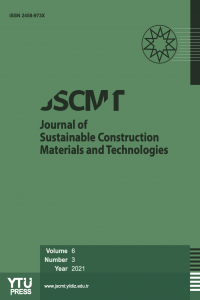Pollution Free and Sustainable Copper Production Using Greenhouse CO2
Pollution Free and Sustainable Copper Production Using Greenhouse CO2
___
- [1] Egypt, M. (2001) Multipurpose Forest Management Plans Based on Geographic Information Systems Purpose Programming Method (Forestry Planning Planning Example), Ph.D. Thesis, KTU Graduate School of Natural and Applied Sciences, Trabzon.
- [2] Akay, A. E., Erdas, O., Belen, B. (2006). Using GIS-Based Sediment Estimation Model, SEDMODL2 in Calculation of Sediment from Forest Roads. Workshop made of forestation and erosion control applications in semi-arid regions of Turkey.
- [3] Altun, L., Yilmaz, M., Acar, C., Turna, I., Başkent, E. Z., & Bilgili, E. (2003). Evaluating the seasonal changes of water quality of the Değirmendere and Galyan Rivers (Trabzon, Turkey). Journal of Environmental Biology, 24(4), 415-422.
- [4] Başkent, E. Z. (2001). Combinatorial optimization in forest ecosystem management modeling. Turkish Journal of Agriculture and Forestry, 25(3), 187-194.
- [5] ETABS V13. Computers and structures Inc. New York, NY 10036, USA.
- [6] ACI 209R-08. (2008). Guide for Modelling and Calculating Shrinkage and Creep in Hardened Concrete. American Concrete Institute, USA.
- Başlangıç: 2016
- Yayıncı: Yıldız Teknik Üniversitesi
Rubberized Mortar from Rubber Tire Waste with Controlled Particle Size
Diego David Pinzón MORENO, Sebastião RİBEİRO, Clodoaldo SARON
Investigation of Mechanical and Permeability Properties of Fiber Mortars
Sustainable Practices in Bridge Construction
Influence of marble powder and fly ash on rheological properties and strength of cementitious grouts
Hikmet SİS, Tufan KIYAK, Cenk FENERLİ, Mehmet GENÇ
Pollution Free and Sustainable Copper Production Using Greenhouse CO2
